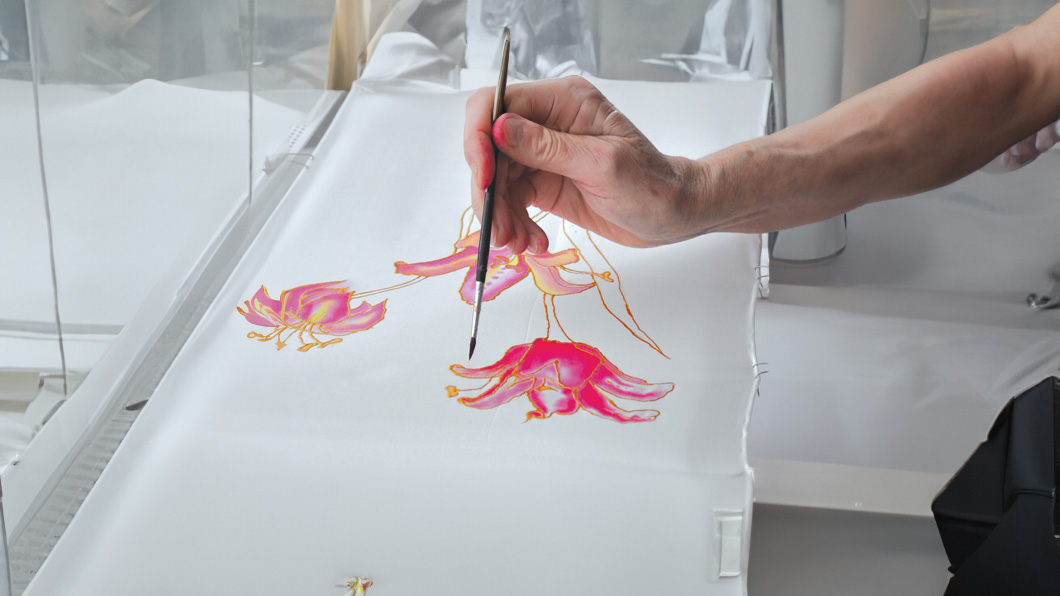Silk art, or silk painting, is an ancient and intricate art form that involves painting on silk fabric using specialized dyes and techniques. This captivating art form has been practiced for centuries and continues to enchant art enthusiasts around the world with its unique blend of elegance, color, and cultural richness. In this blog post, we will explore the history, techniques, and contemporary relevance of silk art, providing a comprehensive understanding of what makes this art form so special.
The History of Silk Art
Silk painting has a long and storied history, with its roots tracing back to ancient China around 2000 BCE. The Chinese were among the first to discover the beauty and versatility of silk, using it not only for garments but also as a canvas for artistic expression. Over time, the art of silk painting spread to other parts of Asia, including Japan, Korea, and India, each culture adding its unique touch to the craft.
In China, silk art was often associated with nobility and high society, as silk was a precious material reserved for the elite. Chinese artists developed sophisticated techniques and styles, often depicting scenes from nature, mythology, and daily life. Japanese silk painting, known as “Katazome,” involved stenciling designs onto silk, while Indian silk painting, particularly in the state of Gujarat, featured intricate patterns and vibrant colors.
Techniques and Materials
Silk art requires a delicate balance of skill, patience, and creativity. The process typically begins with selecting high-quality silk fabric, which serves as the canvas. The silk is then stretched onto a frame to ensure a smooth surface for painting. Artists use a variety of dyes, paints, and tools to create their masterpieces, with each technique offering a distinct visual effect.
- Gutta Resist Technique: This is one of the most popular methods in silk painting. Artists use a substance called gutta to outline their designs on the silk. Once the gutta dries, it forms a barrier that prevents the dye from spreading beyond the outlined areas. This technique allows for precise control and vibrant, detailed images.
- Salt Technique: In this method, salt is sprinkled onto wet dye, creating beautiful, textured patterns as the salt absorbs the dye. The result is a stunning, organic effect that adds depth and interest to the artwork.
- Batik Technique: Originating from Indonesia, batik involves applying wax to the silk fabric before dyeing. The wax-resist method creates intricate patterns and allows for multiple layers of color. After dyeing, the wax is removed, revealing the final design.
- Freehand Painting: Some artists prefer the freedom of painting directly onto the silk without using resists or outlines. This approach requires a steady hand and a keen eye for detail, as the dye spreads quickly on the silk surface.
The Contemporary Relevance of Silk Art
Today, silk art remains a vibrant and respected art form, appreciated for its beauty and cultural significance. Contemporary silk artists continue to innovate, blending traditional techniques with modern themes and styles. The rise of digital platforms and online galleries has also made silk art more accessible to a global audience, allowing artists to showcase their work and connect with collectors worldwide.
In addition to traditional wall hangings and decorative pieces, silk art has found its way into various applications, including fashion, home décor, and even digital art in the form of NFTs (non-fungible tokens). These digital representations of silk paintings allow for a new form of ownership and appreciation in the digital age, bridging the gap between traditional craftsmanship and modern technology.
Why Silk Art?
Silk art is not just a visual delight; it is an embodiment of cultural heritage and artistic excellence. Each piece of silk art tells a story, whether it’s a serene landscape, a vibrant floral design, or an abstract composition. The intricate details and rich colors achieved through silk painting techniques create a sense of wonder and admiration.
Moreover, silk art is a testament to the artist’s skill and dedication. The meticulous process, from stretching the silk to applying multiple layers of dye, requires a level of craftsmanship that is both challenging and rewarding. For collectors and art enthusiasts, owning a piece of silk art is not just about possessing a beautiful object; it is about appreciating the effort, history, and creativity that went into its creation.
Conclusion
Silk art is a timeless and captivating art form that continues to inspire and enchant audiences around the world. Its rich history, diverse techniques, and contemporary relevance make it a unique and valuable addition to any art collection. Whether you are an artist, collector, or simply an admirer of beautiful things, the world of silk art offers endless possibilities for exploration and appreciation.
At Silkpaintingart.com, we are dedicated to showcasing the finest silk artworks, each piece a testament to the beauty and sophistication of this ancient art form. Explore our collection today and discover the magic of silk art for yourself.




